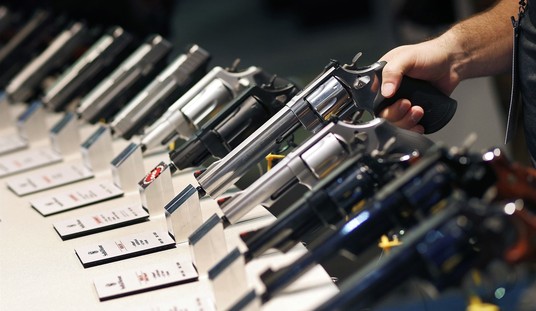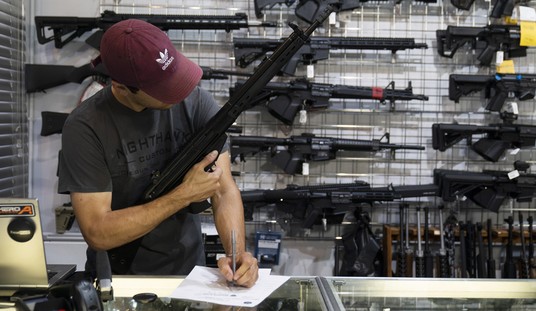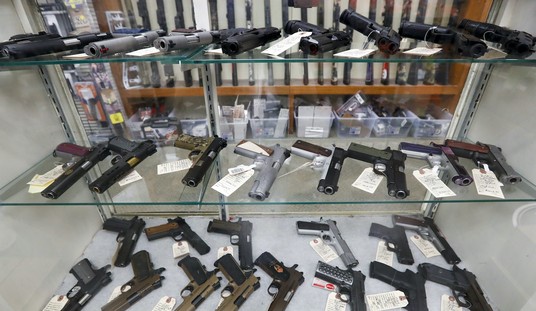We just received a very interesting question from a college student.
Hello, My name is [redacted]. I currently go to Florida Gulf Coast University. This week in one of my classes I was given the question,”Rewrite the Second Amendment to address contemporary concerns.” Now being the Facebook user that I am, I do not use it to much, I wanted to get your opinion on this question because I have liked this page for some while now and was just wondering how you all would go on about answering this.
I think that is a very interesting question, worthy of discussion. I also suspect that I’ll reach a far different conclusion than the instructor of this class was likely hoping to reach.
The Second Amendment was very clear as written to the Founders, but the language then in common use is archaic now. My “contemporary concern” is one of language clarification for a modern audience while still maintaining original intent.
Here is the Second Amendment as written (some might quibble about a comma behind militia; the founders had no such minor grammatical concerns and wrote it both ways).
A well regulated militia being necessary to the security of a free state, the right of the people to keep and bear arms, shall not be infringed.
As Constitution.org reminds us:
The phrase “well-regulated” was in common use long before 1789, and remained so for a century thereafter. It referred to the property of something being in proper working order. Something that was well-regulated was calibrated correctly, functioning as expected.
“Well regulated” was never intended to provide federal government oversight of weapons to even the slightest degree. Barring all federal government interference with this existing right to arms was the explicit intent of the phrase, “the right of the people to keep and bear arms, shall not be infringed.”
Likewise, some people confused about what constitutes the “militia.” Poorly educated (or deliberately obtuse) individuals claim that when the 18th Century Founders were writing about the “militia,” they were referring to the National Guard. That’s a neat trick, since the federalization of the National Guard didn’t occur until the Militia Act of 1903.
Who actually constitutes the militia?
The militia of the United States consists of all able-bodied males at least 17 years of age and, except as provided in section 313 of title 32, under 45 years of age who are, or who have made a declaration of intention to become, citizens of the United States and of female citizens of the United States who are members of the National Guard.
There are two components of the militia, which are the organized militia (which is the much smaller group, consisting of the National Guard and Reserves) and the unorganized militia, which is just about everyone else. Further, the unorganized militia includes all former servicemen and servicewomen to the age of 64 years.
The militia is acknowledged, for all practical purposes, as the entire citizenry that has come of age and is not disqualified.
As for what what constitutes “arms,” the Founders were quite explicit. Founding Father Tenche Cox sums it up nicely.
“Who are the militia? Are they not ourselves? Congress have no power to disarm the militia. Their swords and every other terrible implement of the soldier, are the birthright of an American . . . . The unlimited power of the sword is not in the hands of either the federal or state governments, but, where I trust in God it will ever remain, in the hands of the people.”Tench Coxe The Pennsylvania Gazette, Feb. 20, 1788
If it is a military weapon, the Founders wanted citizens to have them, because they felt a citizenry armed to the teeth would protect the citizenry from the inevitable tyranny of government. Ill-informed souls (including one recently canned television host from Great Britain) claim that the Founders could have only meant muskets, but that simply isn’t the case.
At the time that the Second Amendment was written, citizens owned and possessed or were familiar with the following technologies:
- edged weapons (knives, swords, spears, etc)
- muskets
- shotguns
- blunderbusses
- rifles
- pistols (both fixed and revolving barrels)
- the breech-loading Ferguson rifle, which fired four times as fast as contemporary muskets and which saw service during the Revolutionary War
- a quiet 30-shot rifle with fast-loading 21-round magazines called the Girandoni (pictured below) developed circa 1779 (Thomas Jefferson purchased two of them)

- hand grenades
- cannons
- howitzers
- pivot guns
- mortars
- rockets (“red glare” included)
- early auto-cannons (the Puckle Gun, circa 1718)
- early machine guns (Belton’s “new improved gun” commissioned by the Continental Congress for George Washington’s Continental Army in 1777, an order later cancelled due to cost)
- surface warships
- submarines (the Turtle was supported by General Washington, and used in the Revolutionary War)
- biological weapons (including smallpox) had been used in previous wars in North America including the French and Indian War
- chemical weapons (Admittedly, they were in a developmental lull during this time. The last prior use of “pure” chemical warfare had been by the English Navy, which used powdered calcium oxide to blind the French fleet during a battle during the reign of Henry III. The “traditional” poisoning of enemy food and water supplies was still known during sieges)
Nuclear weapons are some of the few weapons that the Founders might not have been able to envision (early manned aircraft had already taken flight in the form of hot-air balloons, and Leonardo de Vinci had designed tanks), and so perhaps they might not constitute “arms” under the Founder’s definition. I will concede that the Founders would not likely support the private ownership of a city-killing weapon such a nuclear weapon. Virtually everything else, however, they knew of in one form or another… and approved.
In order to rewrite the Second Amendment so that it is more easily understood in modern speech, while still honoring the founders original explicit and implicit intent, I’d suggest that a modernized version of the Second Amendment might read something like this.
A well-armed and trained citizenry, being necessary to the security of a free state, the right of the people to keep and bear arms of contemporary military utility shall not be infringed upon under penalty of death.
If anyone argues that a modern citizenry of 100 million gun owners couldn’t successfully depose a federal government with roughly 2 million men under arms, they’re only reinforcing the argument that the citizenry should be able to purchase arms capable of combating a military force fighting for a tyrannical government.
If anyone suggests that weakening the Second Amendment represents a “contemporary concern,” I’d suggest that they dedicate themselves to the study of world history, and specifically democides.
When population has greater force than the government, then there is liberty, and the government serves the people, which are citizens. When the government has greater force than the citizenry, liberty is at best a temporary state, the people serve the government, and the people are subjects, doomed to every tyranny the government might impose.
How would you update the language of the Second Amendment?











Join the conversation as a VIP Member